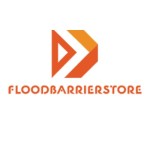Flash floods can happen with little to no warning, especially in regions like Van Nuys, California, where sudden, intense rainfall can overwhelm drainage systems. Preparing in advance is essential—not only to protect your property but also to ensure the safety of your family and belongings. One of the most effective solutions is using a flood prevention barrier. In this article, we’ll explore how you can prepare for flash floods and how installing the right barrier can minimize damage.
Understanding the Risk of Flash Floods in Van Nuys
Van Nuys and surrounding areas are particularly vulnerable to flash flooding due to a combination of urban development, limited green space, and occasional heavy rain events. When stormwater runoff increases, streets, driveways, and basements can become inundated in minutes. This makes it critical for property owners to have flood defense strategies in place well before the rainy season hits.
According to FEMA, just one inch of floodwater can cause up to $25,000 in damages to a home. For business owners, the costs are even higher when you factor in equipment, inventory, and downtime. This is why a proactive approach, including waterproofing, emergency kits, and physical barriers, is vital.
The Importance of Having a Flood Response Plan
A flood response plan includes more than just knowing where the sandbags are stored. It should outline clear steps to take when a flash flood warning is issued. For homeowners, this may involve sealing entry points, turning off utilities, moving valuables to higher ground, and installing protective devices.
One of the best preventative measures is installing a flood prevention barrier. These barriers are designed to redirect or block water before it reaches vulnerable entry points such as doors, windows, and garage openings. Unlike sandbags, which are labor-intensive and time-consuming to deploy, modern barriers can be set up quickly and are reusable.
Choosing the Right Flood Prevention Barrier for Your Property
Not all flood barriers are created equal. The type of barrier you need will depend on the layout of your property, flood risk level, and specific entry points you're trying to protect. For instance, portable flood panels are ideal for residential use, while more permanent barriers may be required for commercial buildings with large entryways. Flood prevention barrier options range from inflatable tubes and modular wall systems to aluminum flood panels that can be bolted into place. Look for solutions that are easy to install, durable, and have been tested under real-world flood conditions. It’s also a good idea to consult with a flood mitigation specialist who can assess your property and recommend the most effective system.
Installation and Maintenance Tips
Installing a flood barrier should be part of a broader home flood protection plan. In most cases, setup can be done with basic tools and within a short timeframe. However, ensure the surface where the barrier will sit is clean, level, and free from debris. This helps maintain a watertight seal and improves performance during heavy flooding.
Don’t forget regular maintenance. Check your barriers for cracks, loose fittings, or signs of wear at least twice a year—especially before the start of the rainy season. If your system includes rubber gaskets or seals, inspect them for dryness or deterioration.
Before installation, it's also wise to test your flood prevention barrier during dry weather. This trial run will help you become familiar with the setup process and allow you to make any adjustments without the pressure of an impending storm.
Additional Flood Preparedness Measures
While barriers are a powerful defense, they work best in combination with other flood protection steps. These include:
- Elevating utilities: Move furnaces, electrical panels, and water heaters to higher floors or raised platforms.
- Landscaping for drainage: Grade your yard so water flows away from the foundation.
- Backflow valves: Install these in your plumbing to prevent sewage from backing up into your home.
- Insurance coverage: Make sure you have a flood insurance policy through the National Flood Insurance Program (NFIP) or a private provider.
Keep an emergency kit handy with essentials like flashlights, bottled water, medication, and important documents. Stay updated through local weather alerts and have a communication plan with family members in case evacuation becomes necessary.
Final Thoughts
Preparing for flash floods in Van Nuys doesn’t have to be overwhelming. By taking proactive steps like installing a flood prevention barrier, creating a response plan, and maintaining your equipment you can significantly reduce the risk of property damage and ensure greater peace of mind during storm season.
For those serious about safeguarding their homes and businesses, investing in a reliable flood defense system is one of the smartest decisions you can make. The right barrier can mean the difference between a dry floor and thousands of dollars in flood-related repairs.
To explore high-quality flood protection solutions designed for both residential and commercial use, visit Flood Barrier Store—a trusted name in flood defense systems built for real-world conditions.






Comments